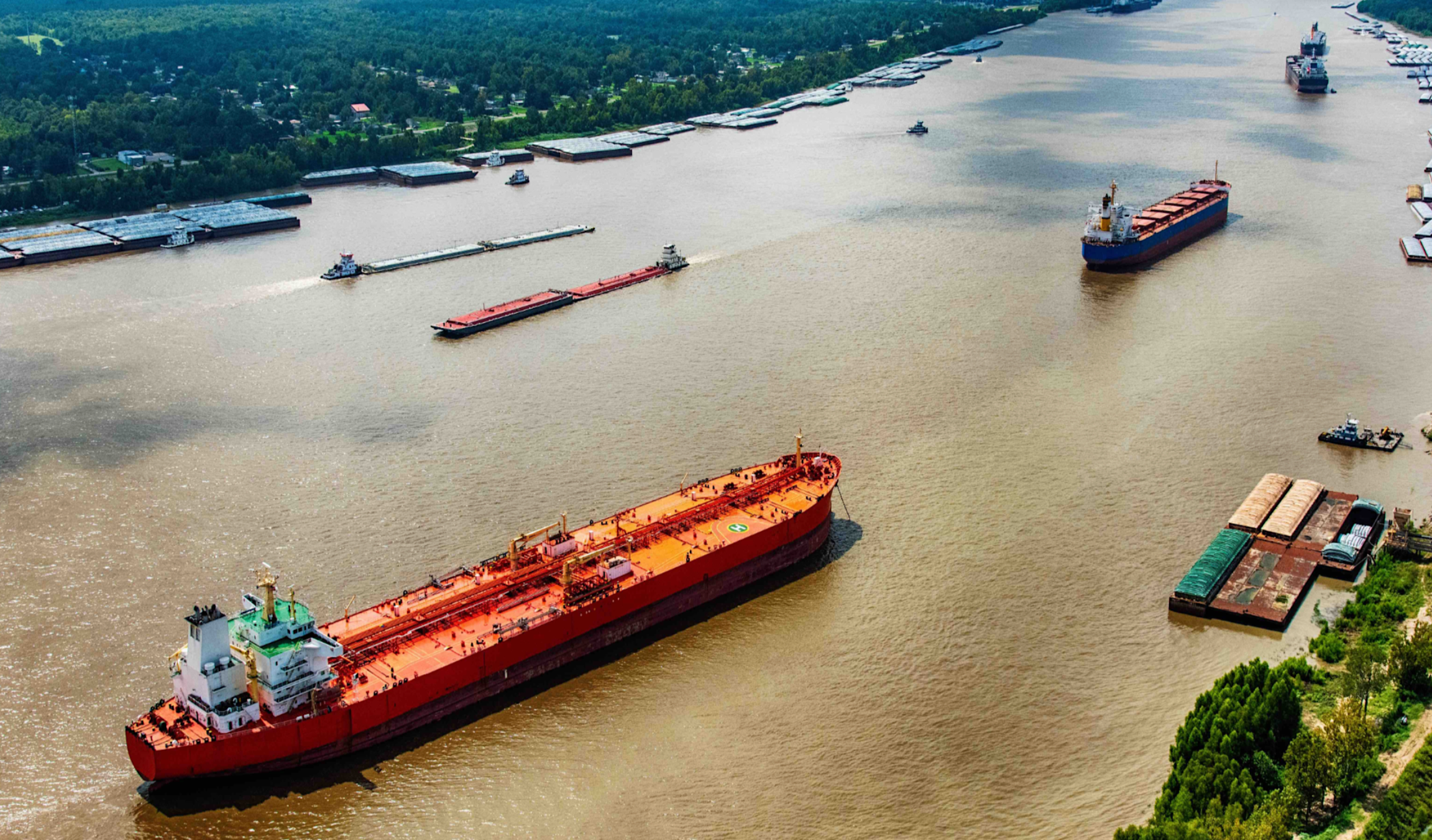
April 5, 2022
Why Don’t We Move More Freight via Inland Waterways Like the Mississippi River?
Tags:
Why Don’t We Move More Freight via Inland Waterways Like the Mississippi River?

April 5, 2022
As U.S. companies continually adjust to the realities of logistics congestion, it’s natural to wonder if there might be some untapped resource to speed supply chains along—like inland waterways.
The U.S. has over 25,000 miles of navigable water, including rivers, canals, and coastal routes. The Mississippi River, in particular, moves a significant amount of US grain, oil and gas, and coal, but we aren’t taking full advantage of it for other types of cargo.
River transport is common in Asia and Europe, though. Could the Mississippi River be a solution to faster, more sustainable, and more cost-effective logistics in the U.S. too?
Expanding River Transport
Within the U.S., the logistics industry is experiencing higher costs and longer transit times, a result of extraordinary consumer demand for goods, global demand for transport, and other factors, like equipment and labor shortages across trucking and rail. Every barge that can move cargo via inland waterways can help reduce demand on other modes.
Read More: Whose Fault Is the Current Ocean Freight Market Crisis? Nobody’s, Really.
Adding barge transport to the market can be tricky, though. For more than 100 years, a federal law known as the Jones Act has restricted domestic shipping of cargo between U.S. ports. The act requires that goods shipped domestically via waterways be transported on ships that are U.S.-owned, U.S.-crewed, U.S.-registered, and U.S.-built. Exceptions exist, but they are narrow and relate to national security.
Ultimately, this limits the supply of barge solutions, due to both increased costs to attain and operate the vessels and the low number of qualified mariners. The United States Maritime Administration (MARAD) may offset a portion of operating costs for qualified vessels through its Maritime Security Program (MSP), but the program is currently limited to 60 operating agreements and all are filled.
Despite this strict environment, a South Florida-based cargo transport company may add capacity to the muddy Mississippi in 2024. That company, American Patriot Holdings (APH), recently issued a request for proposal to seven U.S shipyards for construction of four river container vessels with options for up to four more at 1,864 TEU each.
The ship plans are designed specifically for navigability on the Mississippi River, differing from typical ocean vessels. Services are planned between Plaquemine, Louisiana and Memphis, Tennessee, approximately 400 miles apart.
Infrastructure Readiness
But, even with U.S.-based investment in river vessels, Mississippi River waterway services are severely limited by a lack of infrastructure.
The Midwest region, through which the Mississippi River runs—and from where many fashion retailers distribute goods—is primarily served by rail.
Gulf Coast ports, near the mouth of the Mississippi, can accommodate ships carrying more than 10,000 TEU, but routes to the region are less developed with no direct sailings from many locations in Asia. Readiness at local ports along the river may not rise to the level required to meet inventory demand for those regions, either.
Listen on Future.com: Global Shipping Infrastructure and the Ever Given
For now, the Mississippi River remains an untapped opportunity.
About the Author

April 5, 2022


